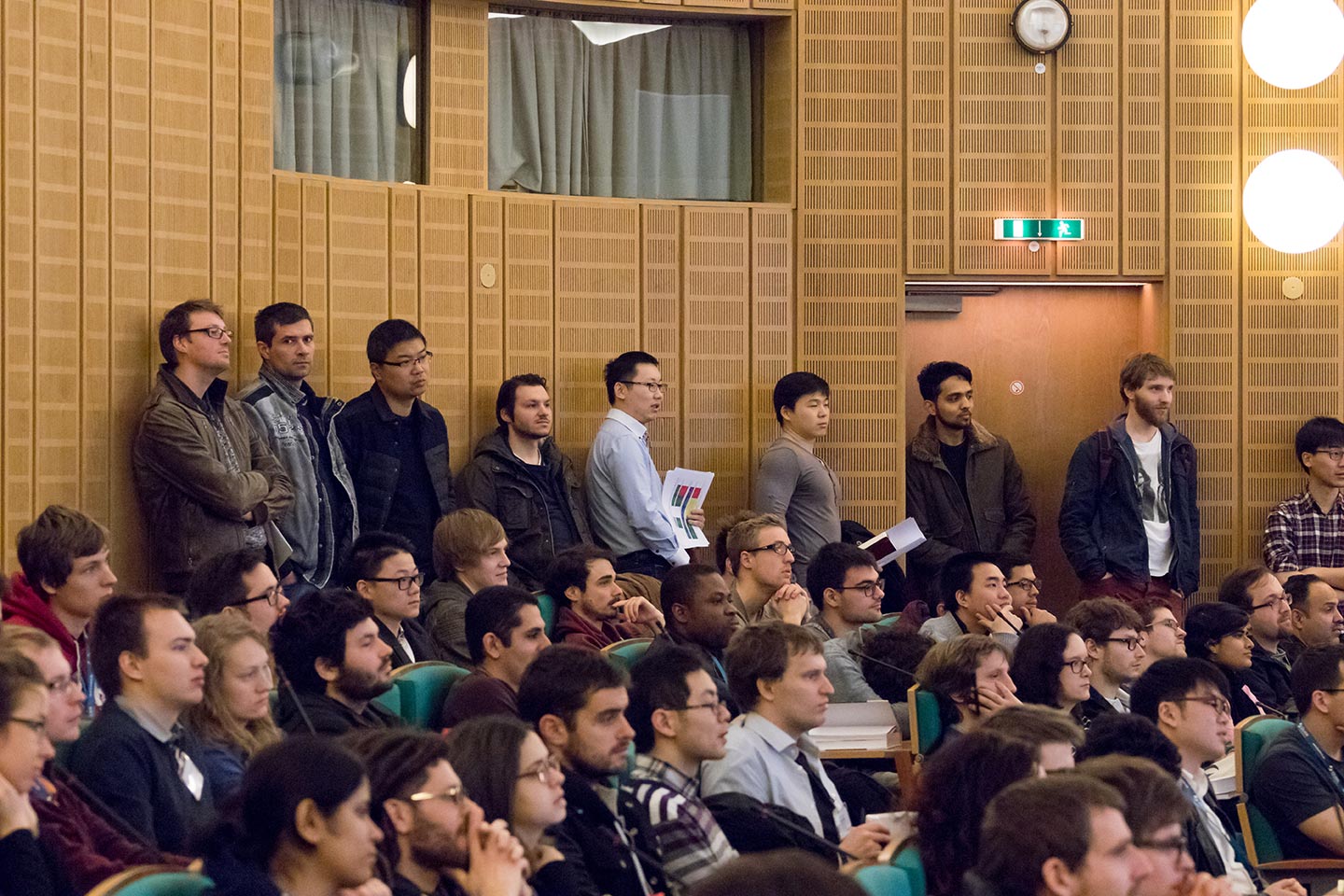Spring School in Jülich
Revolutionizing Quantum Matter
290 students from all across the world in one spring school with one common goal: understanding the physics of topological matter. The mathematical concept of topology was recently honoured with the highest award in a researcher’s career, the Nobel Prize, last autumn. ‘Research into topological materials has boomed – and not just since the 2016 Nobel Prize in Physics was awarded to the pioneers of the area, David Thouless, Duncan Haldane, and Michael Kosterlitz. We hope that this will lead to future applications in materials research as well as electronics’, says Professor Stefan Blügel, leading scientific organizer of the 2017 spring school and director at the Peter Grünberg Institute and Institute for Advanced Simulation, both institutes at Forschungszentrum Jülich.
By Svenja Rausch
Understanding the concept of topological matter is also Jan Müller’s mission during the spring school: ‘Studying magnetic skyrmions, I am already working in the developing field of topological matter. To me, the spring school was attractive from many perspectives since I was not only able to discuss with my colleagues from other universities and hear about their view on skyrmionic matter, but also learn more about the other topics that are related to the more general field of topological matter.” The doctoral student is enrolled at the Bonn-Cologne Graduate School for Physics and Astronomy and works in the research group of Professor Achim Rosch, Leibniz Price holder and leading scientist in the key research area Quantum Matter and Materials at the University of Cologne.
The doughnut and its hole
Jan explains: ‘Topology is a mathematical concept that, crudely speaking, classifies geometrical objects according to their number of nodes. A common example are the ball and the doughnut: the hole in the middle of the doughnut makes it topologically different from the ball, since you cannot deform the one object into the other without closing the hole. The hole in this example is hence the “node” of the doughnut. Over the past years, this concept of smooth transformations has entered the physics of condensed matter. The hope is that the stability of such a node, where a “node” can be a more abstract property, protects certain states in the matter. These super stable states could then be used to create memory devices with huge capacity since the bits could be stabilized at minimal size.’
The Spring School
The spring school in Jülich covered an interdisciplinary spectrum of topics ranging from the theoretical and experimental physical fundamentals of the research area to state-of-the-art analytical methods as well as current research findings and projects. More than thirty experts in the field from Jülich, Cologne, Aachen, and other German and international research institutions held around fifty hours of lectures on the topic during the course of the spring school. Campus tours complemented the programme and permitted the early-career researchers to also learn about experimental facilities, laboratories, and computing capacities of related scientific disciplines offered by the Forschungszentrum Jülich.
State-of-the-art in topological matter
According to Professor Blügel at the Forschungszentrum Jülich the spring school was able to tackle the topic of topological matters: ‘It is still a relatively young subject and not an elementary part of everybody’s education. The school provided a thorough introduction to the basic principles of the field, introduced the field of topological matter and skyrmions in order to enable the next generation to study and realize more exotic concepts and phenomena like majorana fermion zero modes or topological quantum computing.’ Professor Yoichi Ando from the University of Cologne is an acclaimed expert in the field of topological matter. The recent ERC grantee’s (link PM) specialization is the investigation of topological insulators. These are expected to revolutionize IT in the future. ‘The University has built a completely new building for this research and upgraded our resources. We now have excellent research conditions at the University which enable us to make an important contribution to the information technologies of tomorrow’, explains Professor Ando.
Allied leaders in science
‘We collaborate closely with our colleagues at the Peter Grünberg Institute in Jülich within Collaborative Research Center 1238: Control and Dynamics of Quantum Materials. At the heart of this CRC are materials whose novel properties arise from an interplay of spin-orbit coupling, electronic correlations, and topology. Novel phenomena include the formation of topological superconductivity or spin liquids. The cooperation between Jülich and Cologne goes far beyond this latest spring school”, says Simon Trebst, Professor at the Institute for Theoretical Physics in Cologne.
A successful alliance that we will surely all be able to benefit from in the future.



